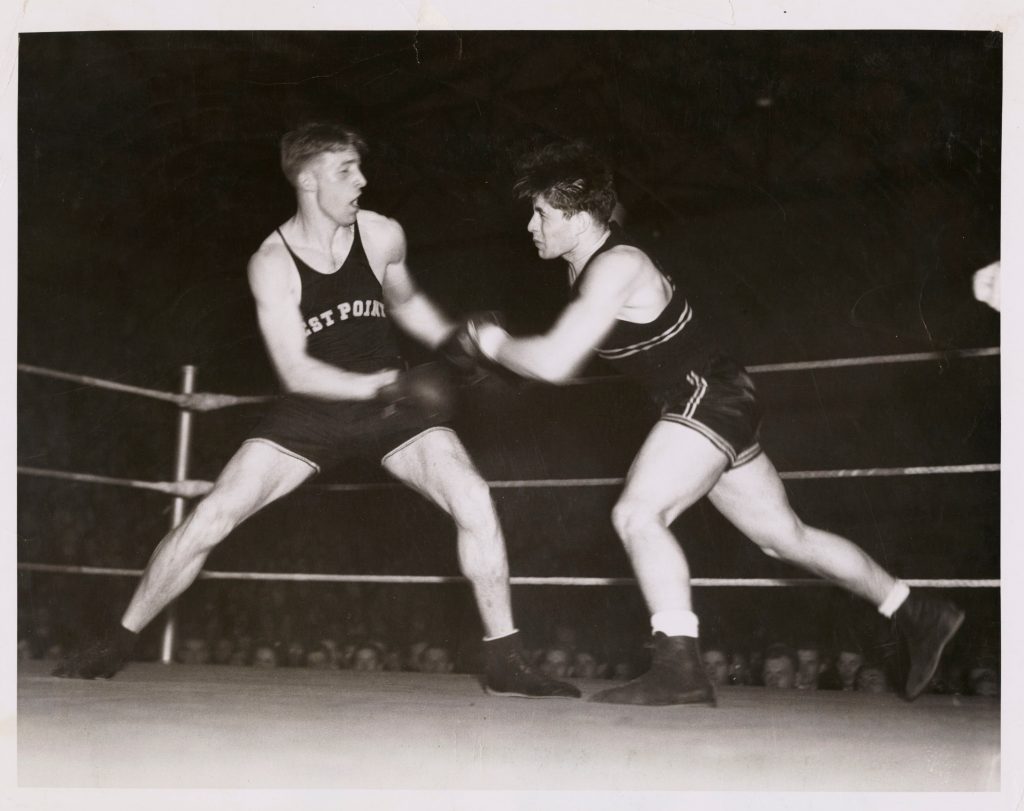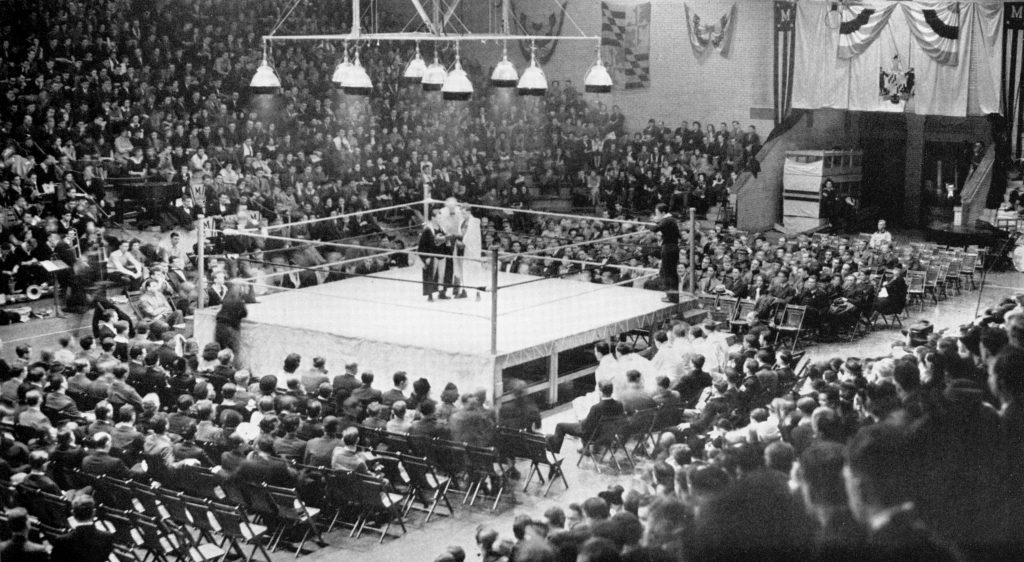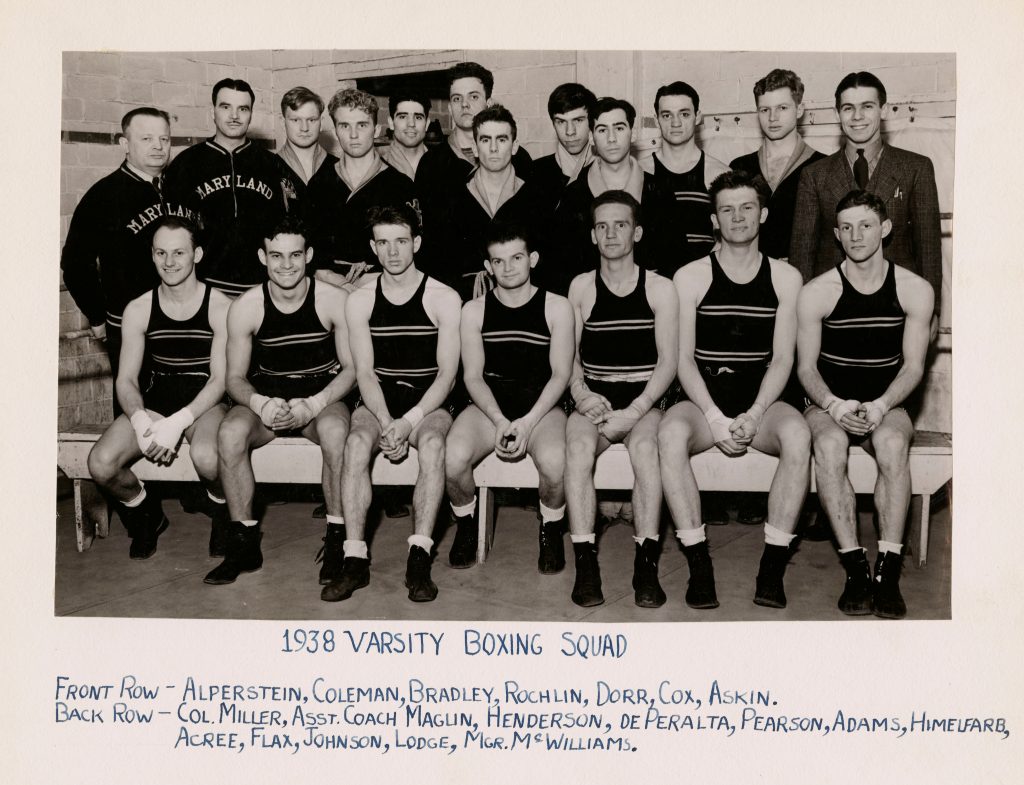
COLLEGE PARK, Maryland — The champ stood in the ring, basking in his accomplishment. For the first time in school history, the University of Maryland had a national champion.
Sixty-five years before Juan Dixon brought a national championship to the University of Maryland, and 16 years before the Terps won a football national championship, Benjamin “Benny” Alperstein won the NCAA boxing lightweight championship in 1937, bringing home Maryland’s first national title.
“Alperstein left the ring unmarked,” the Washington Post wrote at the time. “He simply unwrapped a boxing lesson and dished it out.”
Alperstein was one of the many success stories that came from the University of Maryland’s boxing team, which existed from 1930 until 1955, when the athletic council voted to end the boxing program.
The team went 8-13 their first year under coach William Whipp. Their star boxer was Bernard Keener, who stayed out of the loss column with a 3-0 record.
Just four years after it began, Maryland boxing had its first champion, as Stewart McCaw, who died in 2002 at the age of 92, became a Southern Conference Champion in 1934.
But the real celebration came in 1937 under first-year coach Maj. Harvey L. “Heinie” Miller, who died in 1967, when the southpaw Benny Alperstein fought to bring a national championship back to College Park.
He went up against Washington State’s Bob Bates in the final. Bates was favored, the more experienced and harder puncher. But Alperstein, who died in 2017 at the age of 102, was prepared. He fed Bates a steady barrage of right jabs and left crosses, sending him to the ropes in the first and second round.
Unlike his previous bouts in the tournament against Joe Brocato of Tulane and Karl Drexel of San Jose State, Alperstein was unable to knockout Bates. But it didn’t matter, as Alperstein was consistent throughout the fight, keeping Bates off balance with right hooks when Bates was looking for left hooks, and scoring constant body shots.
In the end, the Washington Post said, Alperstein made the judges’ jobs easy.
“There was no question as to the winner,” the Post reporter wrote. “Alperstein, 21-year-old University of Maryland student, climaxed one year’s experience in the ring by punching his way to the national collegiate title.”
Due in part to Alperstein’s success, boxing became one of the most popular sports at the university. Matches were held at Ritchie Coliseum, and were so popular that basketball games would be held directly after them, in an effort to increase basketball’s attendance.
Alperstein repeated as champion the following year, and became one of three national champions to come from University of Maryland boxing; Gary Garber won in 1954, and Vince Palumbo won in ’54 and ’55.
But just as Maryland boxing was peaking, it came crashing down.
An article from the Diamondback from Oct. 13, 1954, mentioned the potential problems the boxing team could have finding competitors.
“With several schools having already dropped boxing from their varsity sports program and others planning to do so in the very near future, Maryland, the Eastern Intercollegiate champion, may face severe difficulty in slating a schedule this year,” Hal Burdett wrote.
“If the Terps are forced to quit boxing it will be an especially sad blow to Maryland fans who saw their squad end Syracuse’s long ring dominance and produce two National Champions – Garry Garber in the 125-pound division and Vinne (sic) Palumbo in the 132-pound class.”
Six months later, Burdett’s prophetic words came true.
On March 21, 1955, the university decided to end the boxing program.
“Maryland Drops From Boxing Competition,” the headline in the Diamondback read.
James M. Tatum, the director of athletics at the University of Maryland at the time, announced the decision.
“The University’s athletic council voted to discontinue boxing as an intercollegiate sport because of the impossibility of arranging a practical schedule,” he said.
Penn State and Army had also dropped their boxing program, Tatum said at the time, and Virginia was contemplating dropping the sport, leading him to believe continuing was impractical.
According to Tatum, none of the members of the boxing team were on athletic scholarships, meaning the elimination of the sport would have no bearing on the athletes’ financial status.
Boxing in the late ‘40s and early ‘50s had come under fire for its brutality, real or perceived. Boxers wore headgear, padded gloves and only fought three two-minute rounds, yet boxing was often called barbaric and inappropriate for universities.
In March of 1959, four years after Maryland ended their program, Sports Illustrated ran an article about the problems facing collegiate boxing titled “You Could Blame It on the Moms.”
The article by Martin Kane put the blame on mothers; according to Kane, they believed boxing to be unethical, despite knowing nothing about the sport.
Kane’s article also traced college boxing’s demise to a 1940 paper in the Research Quarterly by three members of the University of Illinois physical education department. The paper, titled “The Evaluation of Boxing as a College Activity,” concluded “boxing should not be included in the sports program of an educational institution,” though critics said its data had more to do with prizefighting than college boxing.
The report was based on a questionnaire sent to pathologists, coroners, neurologists, psychiatrists, athletic directors and directors of health services. It suggested troubling things about college boxers being “punch-drunk.”
The symptoms of “punch-drunkness” were listed as “disturbances of equilibrium, vacant look in eyes, headache, dizziness, personality changes, deterioration of concentration and attention, impediment of speech, vomiting, unsteady gait.”
In other words, the symptoms of concussions.
The report also hinted that hidden brain injuries are a long-term effect of boxing.
While boxing fans derided the report, saying “many of (evaluators) knew nothing about boxing,” it is clear the report was ahead of its time.
Concussions are now considered a leading cause of Chronic Traumatic Encephalopathy, more commonly known as CTE. Many former boxers suffer from CTE, according to Boston University CTE Research Center.
A month after the 1940 report Kane references, the American Association for Health, Physical Education and Recreation adopted a resolution against high school boxing. According to the Sports Illustrated article, this negatively impacted college boxing.
In 1960, one year after the Sports Illustrated article came out, Wisconsin’s Charlie Mohr, the defending national champion at 165 pounds, collapsed with a brain hemorrhage minutes after a bout. He died one week later, and the NCAA never sanctioned boxing again.
Today, the NCAA does not sanction any boxing. However, the National Collegiate Boxing Association began in 1976 as a non-profit, autonomous organization for collegiate boxers. There are 35 teams in the NCBA, broken up into three regions.
Maryland is not in the NCBA, meaning their last season was in 1955, when director Tatum announced the end of the program.
In an odd twist however, Maryland’s boxing team did not immediately disband after the announcement. Both Leo Coyne, who passed away in 2014 at the age of 82, and Vince Palumbo had advanced to the National Intercollegiates in Idaho at the end of March.
Palumbo would go on to win his weight class, giving Maryland another national champion — in a sport they no longer had.
Support Community Journalism | SUBSCRIBE


